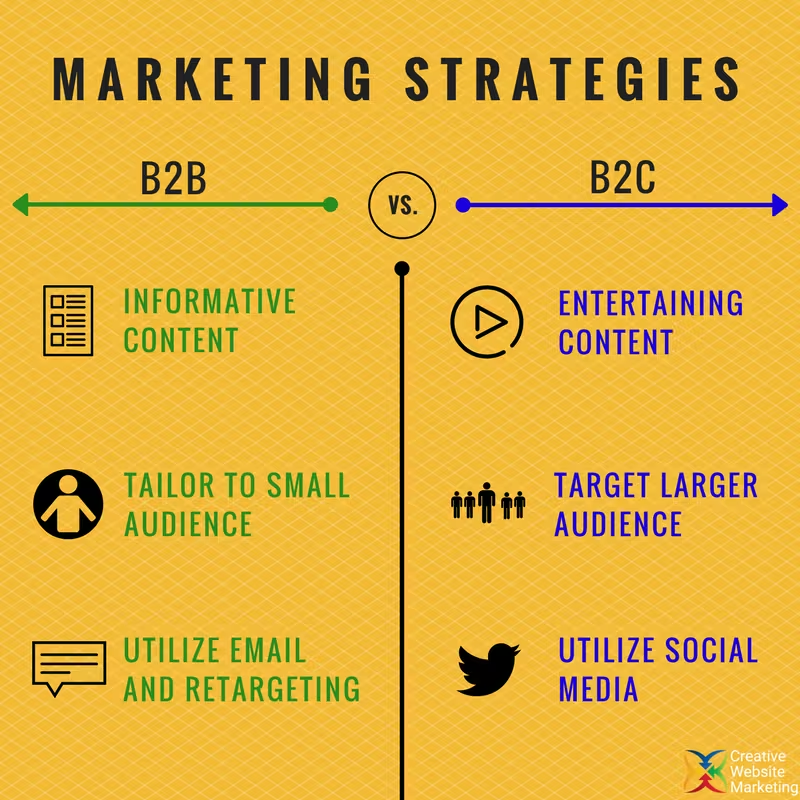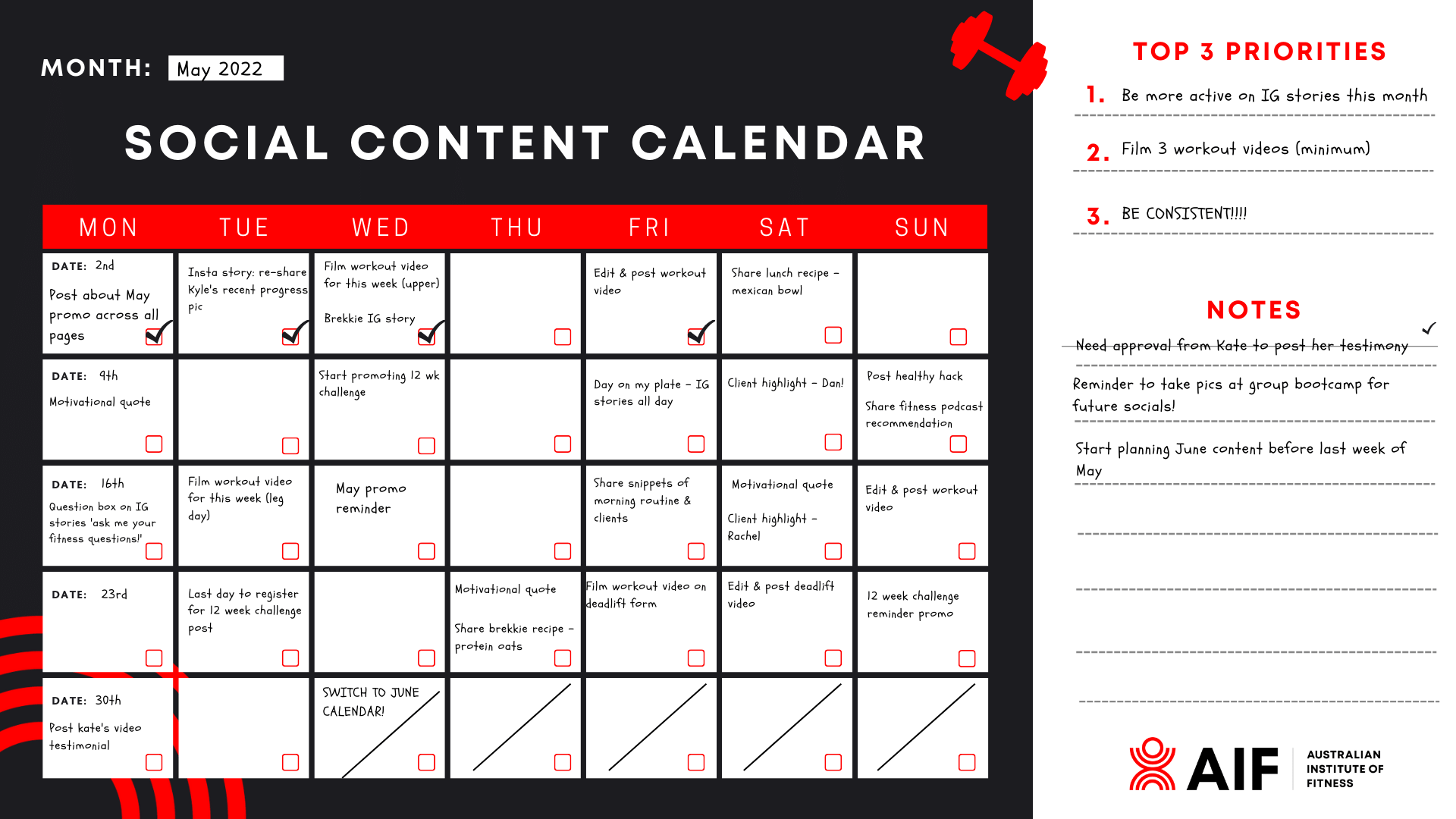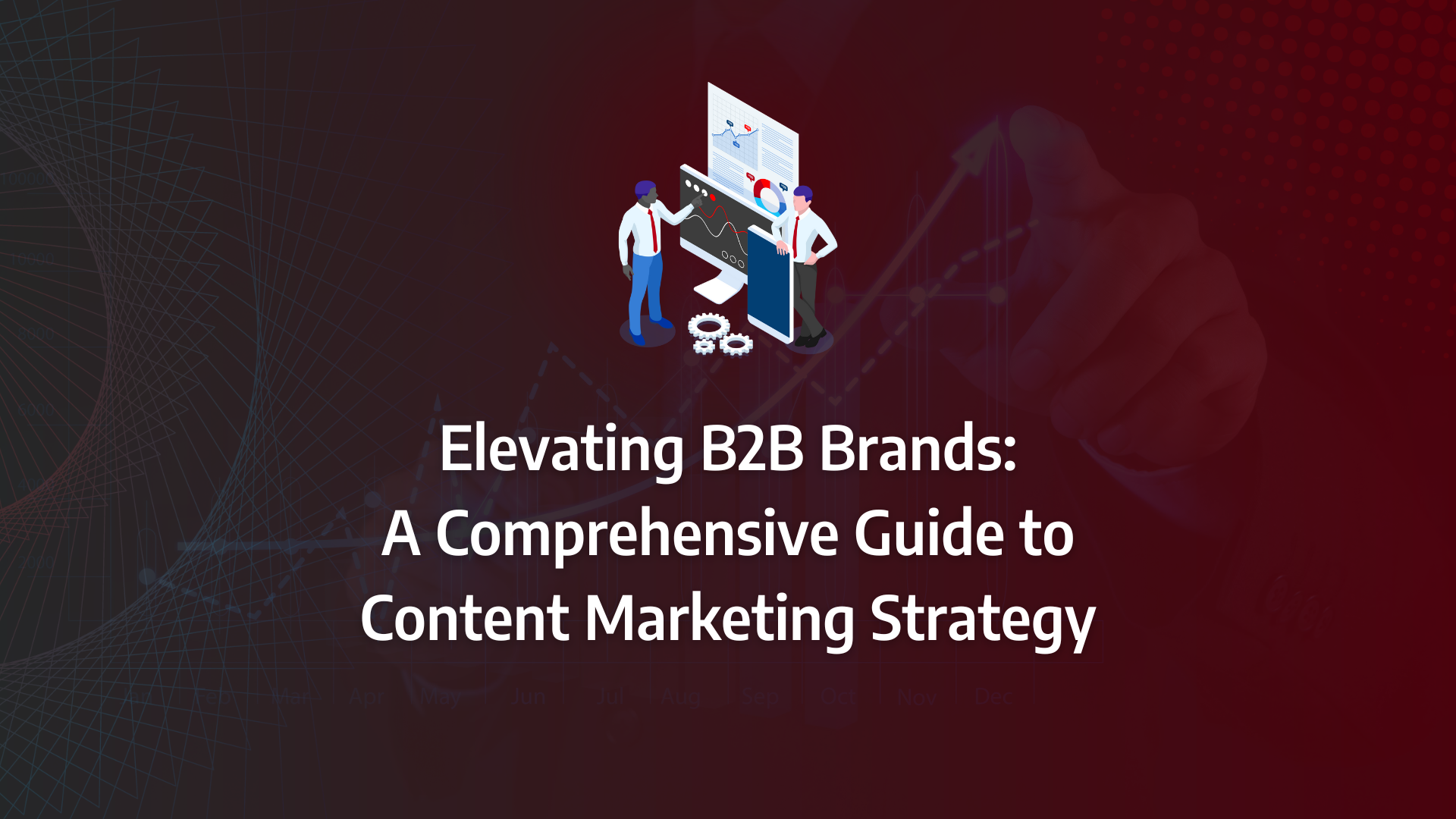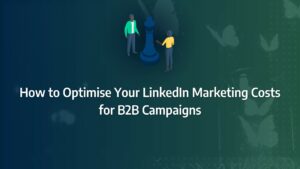Are your B2B content marketing efforts missing the mark with your target audience? Crafting a strategy that resonates with a complex network of decision-makers is no small feat.
The success of your content hinges on your ability to align it with your business goals, develop accurate buyer personas, and strategically distribute it across the right channels. In this comprehensive guide, we’ll walk you through every step of creating and executing a B2B content marketing strategy that drives real results.
- Align Content with Business Goals: Ensure that your content marketing strategy is tightly integrated with your broader business objectives. This alignment is crucial for driving meaningful results and achieving long-term success.
- Develop Accurate Buyer Personas: Create detailed buyer personas based on in-depth audience research. These personas should guide your content creation efforts, ensuring relevance and resonance with your target audience.
- Utilise an Editorial Calendar: Use an editorial calendar to strategically plan and schedule content that addresses different stages of the buyer’s journey. Consistency in content delivery is key to maintaining audience engagement.
- Focus on Content Quality and Relevance: Prioritise creating high-quality content that balances educational value with promotional messaging. Leverage subject matter experts to enhance the credibility and impact of your content.
- Leverage Multiple Distribution Channels: Diversify your content distribution across various channels, such as social media, email, and industry publications, to maximise reach and engagement. Tailor content for each platform to optimise performance.
- Track and Optimise Content Performance: Regularly monitor key performance indicators (KPIs) like lead generation and engagement rates. Use tools like Google Analytics and HubSpot to gather data and refine your content strategy based on insights.
- Avoid Common Pitfalls: Be mindful of common content marketing mistakes, such as neglecting audience research or failing to align content with sales goals. Implementing best practices can help you steer clear of these pitfalls and ensure sustained success.
What is B2B Content Marketing?
At its core, B2B content marketing involves utilising stories, insights, and innovative ideas to captivate and influence a business-oriented audience. In a landscape where audiences are often fatigued by traditional product-focused or overtly sales-driven approaches, the most effective content marketers leverage powerful narratives to ensure their companies stand out.
By introducing fresh perspectives, these marketers inspire and educate their audience, enabling businesses to reconsider their challenges or view market trends from a new angle. The most successful B2B content marketing strategies are underpinned by solid, data-driven insights—whether through compelling statistics, original research, or practical, real-world examples. This allows their audience to grasp emerging trends or complex challenges and equips them with the knowledge and tools to thrive in response.

The Role of Storytelling in B2B Content Marketing
In today’s digital environment, B2B companies inundate their target audience with a constant flow of content—be it reports, e-books, infographics, videos, or podcasts. However, this sheer volume means that much of it fades into the background, unnoticed by the very people it was designed to engage.
So, how can you build a B2B content marketing strategy that breaks through the noise? The answer lies in the fusion of stories, ideas, and insights—these are the pillars of any great content marketing campaign. Business leaders respond to narratives that surprise and inspire, just as they appreciate insights that challenge their thinking on specific industry issues. Just like any audience, they will engage more deeply with stories that resonate on a personal or emotional level.
However, a successful B2B content marketing strategy doesn’t stop at the story. It’s equally important to have a well-planned approach and to select the right channels to engage and convert your target audience. While there is a wide variety of tactics available to content marketers, it’s essential to focus on the ones that align with your audience and deliver meaningful results. Mastering various content formats—from traditional blogs and reports to dynamic videos, podcasts, case studies, and data visualisations—is crucial to achieving success. Ultimately, if your content lacks a compelling narrative, your audience engagement will fall flat.
What Matters Most?
Focusing on building an audience rather than merely promoting products fosters long-term relationships and creates significant value. Developing a clear content mission statement helps guide our strategy, ensuring that all content efforts align with overarching business goals. Additionally, aligning content strategy with the customer journey typically enhances relevance and engagement, allowing brands to connect more meaningfully with their audiences.Get In Touch
The Essential Roles in B2B Content Marketing
Building an effective B2B content marketing strategy requires more than just producing content—it demands the right team with a well-defined structure to execute your vision. If the content is too sales-focused, you risk alienating your audience. On the other hand, focusing solely on entertainment could waste valuable resources. The challenge is to strike a balance, and this begins with assembling a high-performing content marketing team.
As you develop your team, it’s crucial to understand the roles involved and the specific responsibilities required. From content creation to distribution, every role is vital in shaping a successful B2B content marketing strategy.
Content Marketing Manager
First on the list is the content marketing manager, who oversees the entire content process from conception through to promotion. Whether you choose to have this role in-house or outsourced depends on the size and structure of your business. Typically, the role is arranged in one of the following ways:
- A full-time, dedicated content marketing manager.
- A senior marketing leader, such as the VP of marketing or CMO, also assumes the duties of content marketing management.
- An outsourced, part-time content marketing manager, often a freelance copywriter or through an agency.
Responsibilities:
The content marketing manager is the linchpin of the team, responsible for developing and executing the entire B2B content marketing strategy. This includes:
- Crafting a comprehensive content strategy with senior leadership.
- Assigning tasks to writers, graphic designers, photographers, and other content creators.
- Producing or overseeing key pieces of content, such as company updates or major announcements.
- Managing the editing process, either personally or by delegating.
- Publishing and distributing content across relevant channels.
- Collaborating with social media marketers to promote the content effectively.
- Monitoring performance metrics such as website visits, content engagement, and conversions.
- Adjusting the strategy based on analytics and feedback from senior leaders.
Reporting Structure: The content marketing manager typically reports to the head of marketing or directly to the CEO, depending on the company’s size.
Writers & Content Creators
Now, let’s talk about the content creators, the individuals responsible for bringing your content to life. Whether you opt for in-house talent or external freelancers, it’s essential to have the right people for the right type of content. Many businesses choose a hybrid model, utilising both internal and outsourced creators to deliver a steady flow of content.
Responsibilities:
Content creators do much more than write or design. They are integral to shaping the overall vision of your B2B content marketing strategy. Their responsibilities include:
- Aligning their work with the strategic vision set by senior marketing leaders.
- Proposing new B2B content marketing ideas that fit within the overarching strategy.
- Leveraging their resources, such as interview contacts or specialised knowledge, to enrich the content.
Reporting Structure: Content creators typically report to the content marketing manager. In smaller businesses, they may report directly to the CMO or even the CEO.
Editors & Designers
After the content is created, it’s up to the editors and designers to refine and perfect it. These technical roles ensure that the content is polished and ready for publication, whether it’s a blog post, infographic, video, or social media asset. Like content creators, editors and designers can be in-house or outsourced depending on your organisation’s needs and the volume of content.
Responsibilities:
The scope of this role can vary widely depending on the type of content being produced. Typically, editors and designers will:
- Receive content from the content marketing manager and prepare it for publication.
- Apply technical expertise, whether it’s video editing, graphic design, or web design, to enhance the quality of the content.
Reporting Structure: These professionals report to the content marketing manager and collaborate with content creators to ensure consistency and quality.
Social Media Marketer
Content promotion is just as important as content creation, which is where the social media marketer comes in. They are tasked with ensuring that your content reaches the right audience through the appropriate channels. Depending on the size of the company, this role may be managed by the content marketing manager, a freelancer, or a dedicated team in larger organisations.
Responsibilities:
A social media marketer’s role is multi-faceted and includes:
- Growing your brand’s presence across key social media platforms.
- Engaging with followers, responding to comments and questions, and fostering community.
- Building relationships with industry influencers and partnering companies.
- Driving traffic to both new and evergreen content.
- Managing paid advertising campaigns to boost visibility of important content.
Reporting Structure: While the social media marketer works closely with the content marketing manager, the two may collaborate as equals, depending on the organisation’s setup. The most important factor is the smooth exchange of ideas and seamless collaboration between them.
What is the most important element of a B2B Content Marketing strategy
There isn’t a single definitive element that can be crowned as the most important in B2B content marketing. However, there are several overlooked components that are just as critical as the core elements. These often go unnoticed but can have a substantial impact on the success of your B2B content marketing strategy.
Incorporating an Offline Presence
While B2B content marketing best practices are typically focused on digital channels, it’s essential not to ignore offline strategies. Building and nurturing personal relationships is at the heart of B2B interactions. Trust is often a more significant driver than the products or services themselves. Simple offline tactics, such as sending handwritten thank you notes or scheduling in-person meetings, can create a deeper connection with your customers. The human element in a B2B content marketing strategy can reinforce trust and lead to longer-lasting business relationships.
Considering Your Audience’s Level of Intent
A robust B2B content marketing strategy should revolve around delivering valuable information to your audience, but it’s essential to tailor your approach based on their intent. This involves using a mix of formats, such as infographics, reports, and email courses, to attract a diverse range of interests. Implementing a structured content calendar, where different content formats are rotated, can help keep your audience engaged and prevent content fatigue.

Understanding buyer intent is crucial when planning your B2B content marketing ideas. Low-intent readers, for example, might be searching for a broad range of keywords, and while they’re valuable for generating traffic, they’re not always ready to purchase. On the other hand, focusing only on high-intent readers might limit your reach. By balancing content aimed at both high and low intent audiences, you can capture a broader market while improving your SEO positioning and nurturing potential leads into buyers.
Leveraging Competitor Blog Posts
A strategy that has been performing exceptionally well in sectors like SaaS is creating competitor comparison blog posts. These unbiased “best competitor” articles provide a breakdown of alternatives in your industry, including features, pricing, pros, and cons, alongside your own brand. They are particularly effective because they often have significant search volume and low keyword difficulty. As part of B2B content marketing best practices, these types of blog posts are easier to rank than more traditional landing pages, and they establish your brand as a trusted source of information.
How to Plan a Full-Funnel B2B Content Marketing Strategy
Understanding and effectively implementing a B2B content marketing strategy means embracing the marketing funnel. The funnel helps clarify your target customers’ buying behaviours, enabling you to guide them through their journey from awareness to conversion. By mapping out pain points, motivations, and decision-making factors, you can craft a strategy that maximises the chances of conversion.
The traditional B2B content marketing funnel is structured in three stages:
- Top of the funnel (TOFU)
- Middle of the funnel (MOFU)
- Bottom of the funnel (BOFU)
Each of these stages plays a vital role in your B2B content marketing strategy, with unique content types and approaches tailored to the buyer’s position in their journey.

1. TOFU – Awareness Stage
In the awareness stage, your target audience is just beginning to realise that they have a problem or a need. They are actively seeking answers, making this the broadest part of the funnel, typically involving high-volume keywords. At this stage, your focus should be on attracting potential clients and making them aware of your brand.
One of the best ways to capture attention at this point is through effective SEO strategies. You’ll want to drive organic traffic by ranking for broad, high-volume search terms relevant to your audience’s initial queries.
Key tactics for the TOFU stage include:
- Understanding your audience: Utilise smart content to personalise landing pages for different personas, regions, languages, and lifecycle stages.
- Engaging with your sales team: Collaborate with your sales team to identify the social media platforms your target buyer personas are most likely to engage with. Leverage specific hashtags and online communities to increase your reach.
- Social media research: Gain deeper insights into what content resonates with your target audience by monitoring social media interactions.
- Conducting surveys and interviews: Gather qualitative data through direct interactions, capturing your audience’s needs, preferences, and challenges.
Source: Databox
By focusing on understanding your target personas and tailoring content accordingly, you can shape a more effective B2B content marketing strategy that aligns with their initial research needs.
2. MOFU – Consideration Stage
In the middle of the funnel, your prospects have identified their problem and are now actively seeking solutions. At this stage, they are not yet ready to buy but are comparing options, evaluating products, and assessing their choices. Your B2B content marketing strategy at this point should aim to educate and guide, positioning your product or service as the ideal solution.
Your messaging should shift from simply creating awareness to providing context for why your product is the right choice. Highlight your unique value proposition, demonstrating how your offering can help businesses achieve their specific goals, whether through increased profitability or enhanced efficiency.
Some key content types for the MOFU stage include:
- White papers and industry reports: Provide in-depth information that helps potential customers understand their challenges and the benefits of your solution.
- Webinars and quizzes/surveys: Engage prospects by offering interactive content that not only educates but also provides real-time insights into their preferences.
- Product videos and case studies: Show how your product has successfully solved similar problems for other businesses, building trust and credibility.
During the MOFU stage, your website becomes a key player. A professional, intuitive user experience (UX) is essential in establishing trust. Prospects will visit your site to explore your solutions, and it is vital that their experience is seamless and informative. According to Social Media Today, 75% of people gauge a brand’s credibility based on the quality of its website. Ensuring a smooth UX is, therefore, critical to moving leads further down the funnel.
This stage is also the ideal time to integrate advanced techniques into your B2B content marketing strategy. Tactics such as cold email outreach, outbound lead generation, email remarketing, and retargeting ads can help nurture marketing-qualified leads into the decision-making phase.

3. BOFU – Decision Stage
At the bottom of the funnel, prospects are ready to make a purchasing decision. They’ve narrowed down their choices and are evaluating their final options. This is the stage where your content needs to focus on closing the deal and making the buying process as straightforward as possible.
At this point, your B2B content marketing strategy should provide the final nudge needed for conversion. Educational content that dispels any last-minute doubts is crucial.
Content types for the BOFU stage include:
- Free trials or consultations: Encourage prospects to experience your product or service first-hand, reducing the perceived risk of purchase.
- Testimonials and case studies: Reassure prospects by showcasing how others have benefited from your solution.
- Pricing estimates or coupons/discounts: Offer clear pricing information, perhaps with incentives to prompt immediate action.
As prospects reach the decision stage, removing friction from the sales process is vital. Streamlining the buying process—by only collecting essential information and following up post-purchase—ensures a smooth experience for your customers.
Our Tactical Recommendations
From our experience, creating a content calendar is essential for effectively planning and organising your publishing efforts, which maintains consistency and relevance. Clients often find that implementing data-driven strategies allows them to identify content topics that truly resonate with their audience, making their efforts more impactful. Furthermore, using analytics to measure content performance regularly enables continuous refinement and adaptation of strategies, ensuring they remain effective and aligned with audience needs.Get In Touch
Which content marketing strategy is most effective for B2B businesses
Blogs
Blogs remain a cornerstone of B2B content marketing, offering a platform to build authority, drive traffic, and engage your audience. To ensure your blog is successful, it’s important to follow some fundamental B2B content marketing best practices.
Collaborate and Build Relationships
Networking with other bloggers and industry leaders is vital. Far too many blog writers try to operate in isolation, fearing that mentioning competitors will somehow diminish their own visibility. In reality, the opposite is true. Networking and referencing other reputable sources adds credibility to your blog. Some of the best backlinks and partnerships I’ve formed have stemmed from simple outreach, often starting with a straightforward email.
Monitor and Moderate Comments
Spam comments can tarnish the user experience on your blog, and search engines like Google take note. Make sure you regularly remove spam, especially from older posts that may not receive much traffic but are still visible. Tools like Akismet are helpful, but they’re not infallible. Ensure all comments are moderated before publishing to maintain the integrity of your site.
Consistently Promote Your Content
One of the most overlooked B2B content marketing best practices is promoting your blog posts multiple times. There’s no harm in sharing the same link more than once, particularly on fast-moving social platforms like Twitter. Posting a blog link repeatedly ensures you capture different segments of your audience who might have missed it the first time.
Avoid Plagiarism at All Costs
Even small amounts of copied content can harm your search rankings. While short, coincidental phrases may not trigger penalties, repeated use of duplicated content will eventually be flagged. Always strive for originality in your writing. Be vigilant about ensuring your content is unique and valuable to your audience.
Optimise Images with Next-Gen Formats
The visual elements of your blog are just as important as the written content. Modern image formats like WebP and WebM provide higher quality images at lower file sizes, making them ideal for B2B content marketing. They improve load times and ensure your visuals are crisp across devices. If you’re not yet using these next-gen formats, it’s worth adopting them as part of your ongoing strategy.
Regularly Check for Broken Links
Over time, websites move or disappear, leading to broken links in your blog. This not only frustrates readers but can also negatively impact your SEO performance. Using an automated broken link checker is essential to maintaining the health of your blog. If you haven’t checked your blog’s links in over a year, it’s highly likely you have dead links that need attention.
Be Selective with Keywords
Keyword research is essential, but being too broad with your focus can dilute the impact of your content. It’s far more effective to choose one targeted keyword and craft a well-researched, in-depth post around it, rather than trying to cover multiple keywords superficially. By focusing on one keyword, you can dominate that space more effectively and deliver content that is truly valuable to your audience.
Prioritise Quality Over Keyword Density
While keywords are important for SEO, obsessing over exact match densities can harm the quality of your content. Instead of fixating on keyword density, focus on writing naturally around the topic. Use keywords strategically in key locations, but don’t let them dictate your writing. Quality content that engages readers will always perform better in the long term than content overloaded with keywords.
Write Long-Form, High-Value Content
In B2B content marketing, longer content generally performs better, as it allows you to delve deeper into subjects. Aim for blog posts of at least 1,500 words, with 2,000 words being an ideal minimum. However, length alone isn’t enough—every word must provide value. Don’t pad out your content with fluff. Find a balance between detailed insights and maintaining reader interest.
Source: Backlinko
Use Effective Formatting for Readability
Make your blog posts easier to read by using a variety of formatting techniques. Bulleted lists, numbered sections, bold text, italics, and blockquotes can all help break up large blocks of text and draw attention to key points. Many readers skim through content, so you want to make it easy for them to extract the most important information quickly. Well-structured formatting also improves user experience and helps keep readers engaged.
Ensure Your Sitemap is Functional
Your website’s sitemap plays a critical role in how search engines index your content. Yet, sitemaps are often overlooked. Make sure your sitemap is functional and regularly updated. Remove low-value pages, such as tag pages or attachments, to keep it clean and relevant. Submitting your sitemap to Google annually is a small but essential task that contributes to your overall SEO performance.
Social Media
Use Q&A Portals Like Reddit and Quora to Gauge Audience Interests
To craft a successful social media strategy within your B2B content marketing, understanding your audience’s interests, motivations, and pain points is paramount. Leveraging platforms such as Reddit and Quora can offer a treasure trove of insights that will inform the development of highly targeted and engaging content.
With millions of users actively participating in discussions, these platforms allow industry leaders and experts to submit content in various forms—whether text, videos, or imagery—sparking debates and ideas that can shape your content. Unlike traditional social media, the knowledge shared on Reddit and Quora is often evergreen, offering long-term value for your B2B content marketing strategy.
By paying close attention to the topics and challenges that resonate with your audience on these platforms, you can create content that taps into their core concerns, positioning your brand as a trusted voice in the conversation.
Explore Twitter Voice to Expand Your Reach
Twitter, with its hundreds of millions of active users and the rapid pace at which tweets are shared, presents an ongoing challenge for brands to build meaningful engagement. However, with the rollout of voice tweets, you have a new tool to differentiate your brand in the fast-paced social media ecosystem.
The beauty of voice tweets lies in their ability to showcase your brand’s personality and maintain authenticity. As customers increasingly seek real, human experiences from brands, this feature can help you forge stronger emotional connections. A voice tweet, limited to 140 seconds, allows you to share thoughts, insights, or even quick updates in a more personal way than text alone.
Here’s how you can use it:
- Record your audio message, up to 140 seconds.
- If your message is longer, Twitter automatically creates a thread of additional voice tweets.
- Click “Done” to finish, and share your tweet just as you would with a regular post.
By integrating voice tweets into your B2B content marketing ideas, you can bring your brand to life in a way that feels more authentic, helping to build stronger connections with your audience.
Track Audience Comments for Fresh Content Ideas
Social media is an ever-evolving landscape, and tracking the comments and feedback on your posts can serve as a valuable resource for refining your content strategy. Comments allow you to gauge the effectiveness of your social media content, offering real-time insights into what resonates with your audience.
Encouraging your followers to engage and share their thoughts can provide clarity on what works, what needs improvement, and what new topics to explore. Brands that generate the most engagement tend to have a few things in common:
- Quality Content: The most engaging brands consistently post valuable, relevant, and helpful content.
- Positive Interaction: Brands that maintain polite, respectful interactions tend to receive more comments, contributing to increased visibility and engagement on social platforms.
By tracking audience feedback, you can continually refine your social media approach to keep content fresh and responsive to your audience’s needs.
Video Marketing
Maintain a Realistic Budget
Video marketing is one of the most effective formats for B2B content marketing, but it requires careful planning and budgeting. While it can be tempting to go all out in pursuit of the perfect polished video, setting realistic financial parameters ensures that your campaign achieves the desired results without overspending.
The key to success is developing a strategic blueprint that defines your goals, resources, and timeline. By adhering to this plan, you avoid a scattergun approach (often referred to as “spray and pray”) that wastes valuable resources. Ensuring every pound spent maximises ROI should be at the core of your B2B content marketing strategy.
Focus on High-Quality Production
High-quality production, especially in terms of resolution and sound, is essential to delivering a professional impression to your audience. Depending on your resources, you can either hire an external agency or manage part of the creative process internally.
If you opt to produce in-house, you’ll need to consider various creative professionals who can contribute to the project, including design experts, voice actors, animators, and content writers. Taking the time to determine your exact needs before diving into production will ensure the final product is cohesive and impactful.
Integrate Video into Your Sales Funnel
To maximise the impact of video within your B2B content marketing strategy, ensure that your video marketing aligns with other marketing efforts across various media. By doing this, you create a unified and recognisable brand message that runs through all stages of the sales funnel.
Integrating video at different stages of the funnel can dramatically improve engagement, from explaining complex services at the top of the funnel (TOFU) to detailed product demonstrations at the middle (MOFU), and finally, customer testimonials and case studies at the bottom (BOFU).
Types of Video Marketing for B2B:
- Explainer Videos: Short, sharp tutorials or infomercials that clearly communicate your product’s benefits and usage.
- Product Marketing Videos: These go in-depth into product features, offering high-detail visuals to enhance understanding.
- Social Media Videos: Engaging, short-form content designed specifically for platforms like LinkedIn, Twitter, or Instagram.
- Behind-the-Scenes Videos: Offering transparency, these show your audience how your products or services are made or delivered, fostering trust.
- Viral Videos: Content designed to be shared widely—although the market will ultimately decide what becomes viral, the focus should be on creativity.
- Video Email Marketing: Personalised emails that include video can dramatically increase engagement and click-through rates.
- Guerrilla Marketing Videos: Unconventional, often budget-friendly video tactics designed to grab attention in surprising ways.
- Interactive Videos: These offer engagement through polls, links, or comments, allowing the audience to interact with the content.
- Video Advertising: Classic marketing videos that often appear as paid ads on platforms like YouTube or LinkedIn.
- Facebook Video Marketing: Videos tailored for Facebook’s high engagement rate, designed to encourage shares and comments.
- UGC Video Marketing: User-generated content (UGC) videos can be a powerful way to build credibility and trust by showcasing real users interacting with your product.







